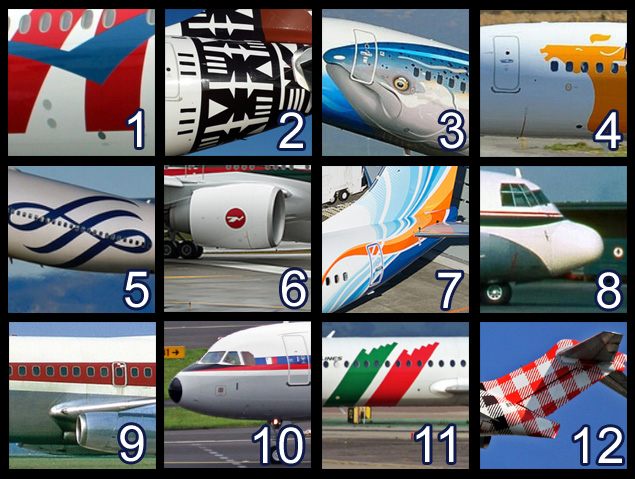
How well do you know your airline liveries?
It is that time again to show how awesome you are at guessing airline liveries. How this works is I give you 12 small parts of an airliner and you need to tell me: #1 what airline does it belong to and #2 what kind of airplane is it?
Some are a little easier and others will be a bit tough, but can you guess all 12? Put your guesses into the comments (don’t cheat and just look at others’ answers). In a few days I will post all the answers with links to the original photos.
Game on!
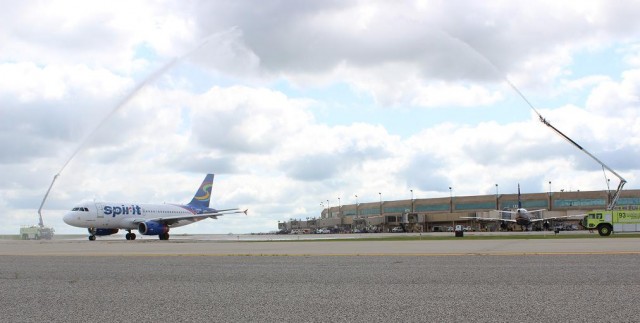
Spirit’s first flight out of Kansas City receives a dual water cannon salute – Photo: Aaron Wright, KC Aviation Dept.
It’s true, people vehemently despise Spirit Airlines. Just the mention of the company elicits emotion-filled horror stories. Indeed they have a solid 1 out of 5 star rating on TripAdvisor, and they are frequently found at, or near, the top of various “worst airline” rankings. In direct contrast to these ratings and frequent “I’ll never fly Spirit again” claims, the airline continues to grow and increase market share. This begs the question – is the experience really THAT bad? Or, is there something else at play here?
BONUS: The Five Stages of Flying an Ultra Low Cost Carrier (Epic Comic Style)
In their own defense, Spirit argues that the mass dissatisfaction with them is in large part due to consumers not understanding their progressive, totally unbundled Ultra Low Cost Carrier (ULCC) business model. That assertion seems to hold water. The vast majority of complaints I hear and see are indeed related to “unexpected fees” and being “nickel and dimed” to death. As the well-known cliche goes: “The first step to recovery is admitting you have a problem.” Thankfully, Spirit recognizes there is a problem. To that end they recently hired Barkley, a KC-based marketing firm to assist with better educating consumers and promoting what they refer to as a “bare fare.”
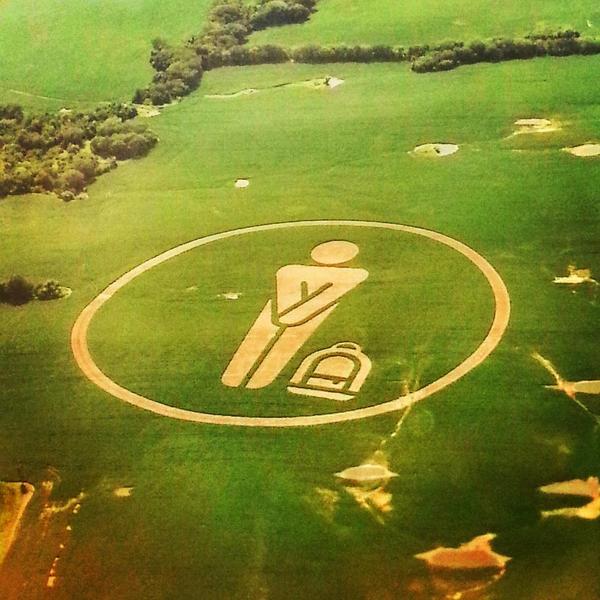
“Bare Fare” crop circle spotted in a soy field just north of the KC airport – Photo: Victor Lazo
A few months ago, Kansas City International airport announced that ours would be a new market served by Spirit. Shortly after an unexplained crop circle appeared prompting a lot of curiosity. It turned out the image seen above is the logo for Spirit’s Bare Fare.
I was excited to finally have the opportunity to give them a shot, contrary to the advice of everyone who I’d informed of my intentions. I booked a seat on the first flight out, and this is my honest, unbiased review…
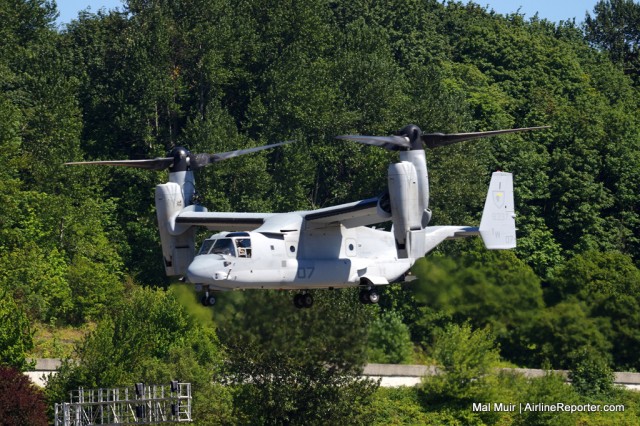
A MV-22B Osprey on approach to Boeing Field
Summer in Seattle means lots of things to locals in the Pacific Northwest. Long days with the sun setting at 10pm, with Mt. Rainier standing out tall and proud in the skyline. Blue skies, sun, and outdoor fun, but most of all it means one thing for AvGeeks: Jet noise!
During the first weekend of August in Seattle is Seafair, and the main attraction has always been the Blue Angels (it also coincides with Fleet Week). However, this year, things were a little bit different over the skies and on the ground in Seattle. The United States Marine Corps (USMC) came to town. They were not going to let the US Navy have all the fun, and this year, it was time to bring Marine Week to Seattle.

The United States Marine Corps takes over the Museum of Flight for Marine Week – Photo: Jennifer Nagle
This year the USMC decided to bring Marine Week to Seattle to showcase and honor not only the Marine Corps as a whole, but also how much of a role the Corps has to the local area. People in Seattle could meet the Marines themselves, learn about what they do, why they do it, and then get to see how they do it. The biggest part of the weekend would be the Marine Air Ground Task Force (MAGTF) demonstration over the skies of Lake Washington.
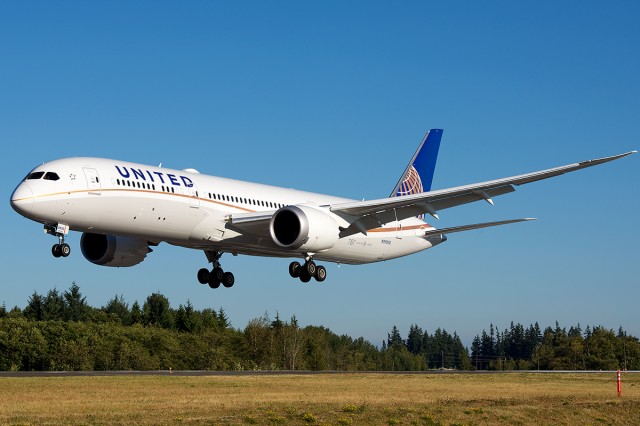
United recently swapped their remaining 787-8 orders for 787-10s. This, however is a -9 – Photo: Bernie Leighton | AirlineReporter
Boeing sees a market for 36,770 new aircraft between 2014 and 2033; only 2,490 of them are in the “regional” category. They are also clear to not differentiate the single-aisle market by size, but other than in the “Very Large Aircraft” category (think 747 and A380), their forecast for total aircraft demand is very bullish.
With United Airlines converting seven of its eight remaining 787-8 orders to the largest Dreamliner, the 787-10, it is a situation reminiscent of Air Berlin, pending approval, switching their 787-8s to larger 787-9s.
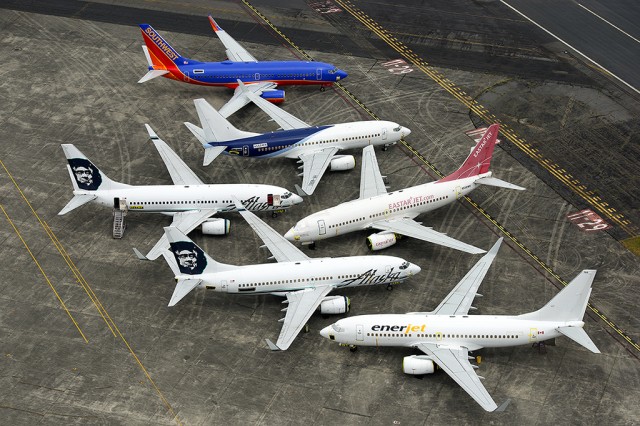
Many airlines are trading 737-700s for larger 737-800s as they come off lease. Southwest, however, is more than happy to have the smaller birds – Photo: Bernie Leighton | AirlineReporter
This is not a trend I expect to stop. Right now, the 787-8 comprises 47% of the total order book. That is, of course, significantly higher than the 249 767-200s ordered in the 767 family (or ~20% of the total 767 passenger fleet produced).
The 737-7MAX has garnered the fewest orders of the family (55). On the Airbus side of the spectrum, the A350-800’s future hangs in a precarious balance. The A319NEO has only garnered a total order for 45 frames. The smaller the next-generation aircraft, the smaller the backlog. Or at least, that is what the evidence shows.
The reason, as always, comes down to the most important question an airline has to answer: “what makes the most profit?”

UPDATE Jan 5, 2015: I know many of you are anxious and waiting for the tickets. We are too. We have hit some snags in finalizing the schedule, which we need to do before we can sell the tickets. Do not worry AGF15 is still happening on Feb 21 and 22. We are hoping to have the scheduling done SOON, give you all a heads up on when the tickets will go on sale and then sell them. They will be first come, first serve, with a wait-list after they are sold. Thank you for your support and patience. – David
We heard the feedback from many of you! Aviation Geek Fest Seattle 2015 will NOT be over the Valentine’s Day weekend (also Presidents Day weekend). AGF15 will be held on February 21st and 22nd, 2015 in Seattle.
I know you want more details, but at this time, that is all that we have. In the next few months, we will be working hard with the Future of Flight, Museum of Flight, and Boeing to come up some great AvGeek adventures. There will be some things that look familiar and hopefully some new things as well.
If you have not already done so, please sign up for the AGF email list. Any updates will be sent via that list and posted on AirlineReporter.
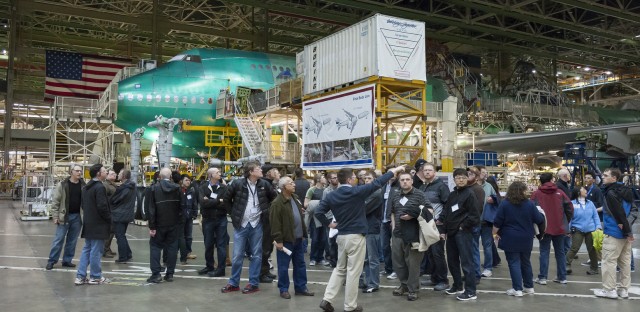
A group of AvGeeks in front of a Boeing 747-8I – Photo: The Boeing Company
I know, I know, you all want details, but we just don’t have them yet — but soon. If you have ideas in what you want to see for Aviation Geek Fest 2015, then feel free to leave them in the comments, but no promises.
Likely tickets will be sold on a first come, first serve basis, as they have been in previous years. They sold out in about 3 minutes last year — they are in high demand.
What is Aviation Geek Fest? Oh man… hold on to your boots — it is a two-day aviation adventure of epic proportions. See what we have done in the past:
Thanks everyone for your amazing support with this event and we cannot wait to see you in February!








